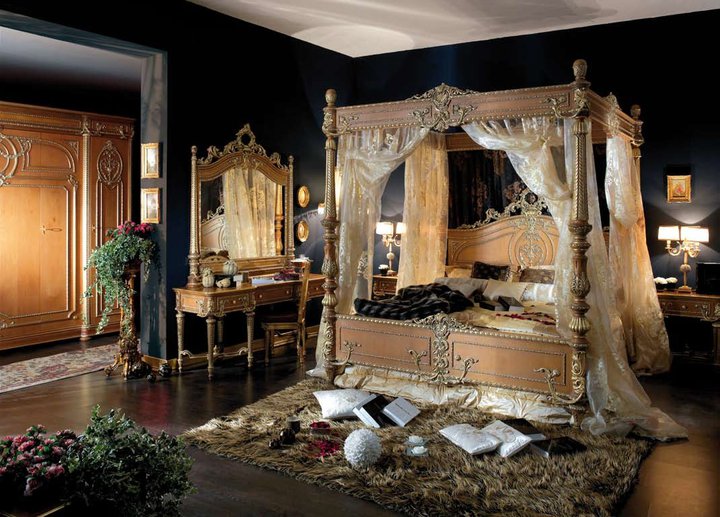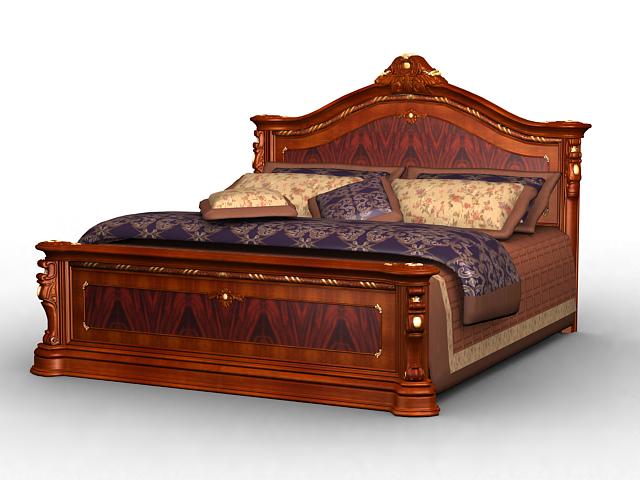20% OFF EID OFFER
 The Mughal bedset, a symbol of royal grandeur and aesthetic sophistication, is a masterpiece of craftsmanship, blending opulent materials, intricate designs, and rich cultural symbolism. These sets, often commissioned by emperors or nobility, were more than just functional bedding; they represented the pinnacle of Mughal artistry and wealth. The foundation of a Mughal bedset typically consisted of luxurious fabrics like silk, velvet, brocade, and sometimes cotton, with sumptuous textures that exuded elegance and comfort. Rich, royal colors such as deep crimson, sapphire blue, jade green, and golden yellows were predominant, often complemented by intricate, hand-embroidered patterns. The embroidery, a hallmark of Mughal textiles, featured elaborate floral motifs, paisleys, birds, and vines, all executed with exceptional precision and skill. Gold and silver threads were often woven into these patterns, elevating the aesthetic and reinforcing the royal status associated with such items. The motifs themselves, ranging from delicate flowers to geometric shapes, were deeply symbolic of nature, life, and spirituality, reflecting the Mughal Empire’s respect for the natural world and its embrace of Persian, Central Asian, and Indian artistic traditions. These bedcovers were often crafted using the Jamdani technique, a form of handloom weaving that produced incredibly fine, detailed patterns. Quilts, a crucial component of the bedset, were thick and lush, typically quilted with cotton or down feathers for warmth, yet lightweight enough to maintain the intricate designs on the surface. Sometimes, these quilts were also adorned with semi-precious stones, pearls, or beads, further enhancing their luxury. The bedsets were not only about the aesthetic but also about comfort and practical use, offering a plush sleeping experience fit for royalty. The craftsmanship of Mughal bedsets extended beyond the bedding itself; accompanying elements like pillows and bolster covers were equally detailed and luxurious. These were often embroidered with the same delicate motifs as the bedcovers, ensuring a cohesive look across the entire bed. The beds themselves were also lavishly designed, often made of carved wood or stone, with intricate inlays of marble and precious stones, a nod to the empire’s architectural feats. The Mughal bedset was a fusion of functionality and high art, reflecting the cultural syncretism of the Mughal Empire, which brought together influences from Persian, Central Asian, and Indian traditions. The luxurious nature of these sets also underscored the political and social power of the Mughal rulers, who used such lavish objects to display their wealth and taste. For the Mughal elite, these bedsets were not only about comfort but also a reflection of their position in the empire’s complex social hierarchy. In addition to their aesthetic appeal, these bedsets served as a form of identity and status, often becoming heirlooms passed down through generations. The designs were influenced by various Mughal court artists and artisans, some of whom were renowned for their ability to create remarkably intricate and detailed embroidery. The use of vibrant colors and metallic threads was also a nod to the wealth and resources of the empire, as gold and silver were expensive materials. In this sense, a Mughal bedset could be seen as a physical manifestation of the wealth and power of the Mughal rulers, their court, and the regions they controlled. They were often crafted in workshops located in Mughal cities like Delhi, Agra, and Lahore, where skilled artisans and weavers produced these remarkable textiles. Mughal bedsets were also deeply connected to the empire’s broader cultural and religious life, with Islamic calligraphy and geometric patterns sometimes incorporated into the designs, adding a spiritual dimension to the pieces. At the height of the Mughal Empire, these bedsets would have been found in the royal palaces, particularly in the private chambers of the emperors and their families, where they served both practical and ceremonial roles. The use of Mughal bedsets in courtly life reflected the empire’s obsession with beauty, refinement, and material culture. As a testament to the Mughal fascination with art and design, these bedsets have become a significant aspect of India’s historical textile legacy, cherished not only for their beauty and craftsmanship but also for the way they encapsulate the cultural fusion, luxury, and artistry of an empire that spanned centuries and left an indelible mark on Indian history. Even today, the techniques used in creating these bedsets are admired by historians, designers, and textile experts, making the Mughal bedset a timeless object of art, history, and culture.
The Mughal bedset, a symbol of royal grandeur and aesthetic sophistication, is a masterpiece of craftsmanship, blending opulent materials, intricate designs, and rich cultural symbolism. These sets, often commissioned by emperors or nobility, were more than just functional bedding; they represented the pinnacle of Mughal artistry and wealth. The foundation of a Mughal bedset typically consisted of luxurious fabrics like silk, velvet, brocade, and sometimes cotton, with sumptuous textures that exuded elegance and comfort. Rich, royal colors such as deep crimson, sapphire blue, jade green, and golden yellows were predominant, often complemented by intricate, hand-embroidered patterns. The embroidery, a hallmark of Mughal textiles, featured elaborate floral motifs, paisleys, birds, and vines, all executed with exceptional precision and skill. Gold and silver threads were often woven into these patterns, elevating the aesthetic and reinforcing the royal status associated with such items. The motifs themselves, ranging from delicate flowers to geometric shapes, were deeply symbolic of nature, life, and spirituality, reflecting the Mughal Empire’s respect for the natural world and its embrace of Persian, Central Asian, and Indian artistic traditions. These bedcovers were often crafted using the Jamdani technique, a form of handloom weaving that produced incredibly fine, detailed patterns. Quilts, a crucial component of the bedset, were thick and lush, typically quilted with cotton or down feathers for warmth, yet lightweight enough to maintain the intricate designs on the surface. Sometimes, these quilts were also adorned with semi-precious stones, pearls, or beads, further enhancing their luxury. The bedsets were not only about the aesthetic but also about comfort and practical use, offering a plush sleeping experience fit for royalty. The craftsmanship of Mughal bedsets extended beyond the bedding itself; accompanying elements like pillows and bolster covers were equally detailed and luxurious. These were often embroidered with the same delicate motifs as the bedcovers, ensuring a cohesive look across the entire bed. The beds themselves were also lavishly designed, often made of carved wood or stone, with intricate inlays of marble and precious stones, a nod to the empire’s architectural feats. The Mughal bedset was a fusion of functionality and high art, reflecting the cultural syncretism of the Mughal Empire, which brought together influences from Persian, Central Asian, and Indian traditions. The luxurious nature of these sets also underscored the political and social power of the Mughal rulers, who used such lavish objects to display their wealth and taste. For the Mughal elite, these bedsets were not only about comfort but also a reflection of their position in the empire’s complex social hierarchy. In addition to their aesthetic appeal, these bedsets served as a form of identity and status, often becoming heirlooms passed down through generations. The designs were influenced by various Mughal court artists and artisans, some of whom were renowned for their ability to create remarkably intricate and detailed embroidery. The use of vibrant colors and metallic threads was also a nod to the wealth and resources of the empire, as gold and silver were expensive materials. In this sense, a Mughal bedset could be seen as a physical manifestation of the wealth and power of the Mughal rulers, their court, and the regions they controlled. They were often crafted in workshops located in Mughal cities like Delhi, Agra, and Lahore, where skilled artisans and weavers produced these remarkable textiles. Mughal bedsets were also deeply connected to the empire’s broader cultural and religious life, with Islamic calligraphy and geometric patterns sometimes incorporated into the designs, adding a spiritual dimension to the pieces. At the height of the Mughal Empire, these bedsets would have been found in the royal palaces, particularly in the private chambers of the emperors and their families, where they served both practical and ceremonial roles. The use of Mughal bedsets in courtly life reflected the empire’s obsession with beauty, refinement, and material culture. As a testament to the Mughal fascination with art and design, these bedsets have become a significant aspect of India’s historical textile legacy, cherished not only for their beauty and craftsmanship but also for the way they encapsulate the cultural fusion, luxury, and artistry of an empire that spanned centuries and left an indelible mark on Indian history. Even today, the techniques used in creating these bedsets are admired by historians, designers, and textile experts, making the Mughal bedset a timeless object of art, history, and culture.

 This is a carved wooden bed with a geometric lattice pattern, often referred to as a Mughal-style or traditional wooden bed Design & Style: The bed is crafted from solid wood, likely teak, sheesham, or cedar, known for durability and rich texture. The headboard, footboard, and wardrobe share a distinct grid-like geometric pattern with raised squares and round metal studs, giving it a rustic yet royal appeal. The design is reminiscent of Mughal, Moroccan, or traditional Rajasthani wooden furniture, featuring intricate craftsmanship. The wood has a polished honey or amber finish, enhancing the natural grain and texture. Structure & Build: The headboard is tall and wide, providing a grand appearance and solid back support. The footboard is equally detailed, maintaining the symmetrical aesthetic. The side tables and wardrobe match the bed’s pattern, creating a cohesive bedroom set. Metal rivets reinforce the structure, adding a vintage touch and improving durability. Ambience & Suitability: Best suited for classic, vintage, or rustic interiors. Works well in homes with wood-heavy décor, traditional themes, or heritage aesthetics. Complements earthy tones, warm lighting, and textured rugs, as seen in the image. This type of bed is commonly custom-made or available in handcrafted furniture stores specializing in ethnic, antique, or colonial-style furniture.
This is a carved wooden bed with a geometric lattice pattern, often referred to as a Mughal-style or traditional wooden bed Design & Style: The bed is crafted from solid wood, likely teak, sheesham, or cedar, known for durability and rich texture. The headboard, footboard, and wardrobe share a distinct grid-like geometric pattern with raised squares and round metal studs, giving it a rustic yet royal appeal. The design is reminiscent of Mughal, Moroccan, or traditional Rajasthani wooden furniture, featuring intricate craftsmanship. The wood has a polished honey or amber finish, enhancing the natural grain and texture. Structure & Build: The headboard is tall and wide, providing a grand appearance and solid back support. The footboard is equally detailed, maintaining the symmetrical aesthetic. The side tables and wardrobe match the bed’s pattern, creating a cohesive bedroom set. Metal rivets reinforce the structure, adding a vintage touch and improving durability. Ambience & Suitability: Best suited for classic, vintage, or rustic interiors. Works well in homes with wood-heavy décor, traditional themes, or heritage aesthetics. Complements earthy tones, warm lighting, and textured rugs, as seen in the image. This type of bed is commonly custom-made or available in handcrafted furniture stores specializing in ethnic, antique, or colonial-style furniture.






